Fall Cleanup: 8 Garden Chores You Should Never Skip
Updated: Sep. 29, 2021
Even if time is tight, focus on these fall cleanup chores that fellow gardeners say you should always finish before colder weather arrives.
Our editors and experts handpick every product we feature. We may earn a commission from your purchases.
When it comes to fall cleanup, the work can add up. Judy Roberts of Graytown, Ohio, even jokes, “My list includes emptying pots and storing them, digging up calla lily tubers and removing all my ceramic garden décor. Phew—I’m tired just thinking about it!”
But, some fall cleanup chores are more important than others to keep your yard and gardens looking fantastic. They also set yourself up for success through winter and spring. Here are the tasks that Birds & Blooms readers never skip, no matter how busy they are.
1. Fall Cleanup: Take Care of Garden Tools
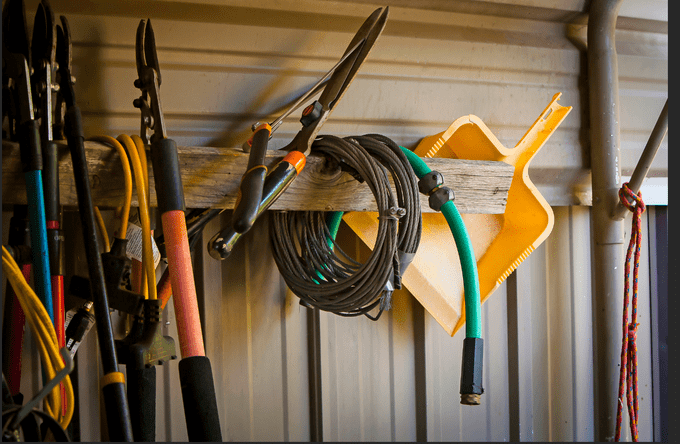
It’s possible for plants to swap diseases and parasites, but there are a few things you can do to help keep your plants healthy. One can’t-skip autumn activity is cleaning and sharpening garden tools.
“I’m sure to clean all my garden utensils thoroughly,” comments Joan Heid of Chester, South Carolina. She adds that it’s also a great time to organize them, saying that she always “stores tools away for easy access in spring.” Wipe tools clean of any sap, soil or dirt. If you’ve used a tool on a diseased plant, be sure to soak it in a 10 percent bleach solution and rinse well with clear water. Allow the tool to dry thoroughly before storing it away to avoid rust. Also replace any worn out or damaged tools.
Looking to upgrade your equipment for the next gardening season? Check out these essential tools for fall garden cleanup.
2. Dig Up Non-Hardy Bulbs
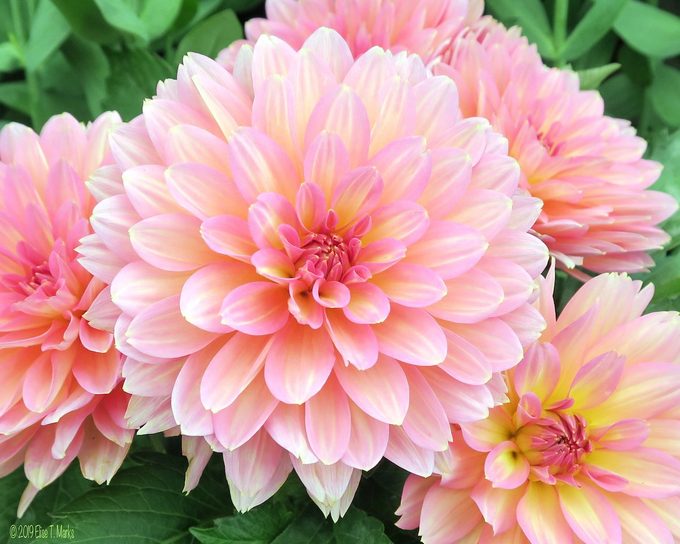
Fall is the time to get down and dirty. Some plants grow well outdoors in the summer, but just can’t take the winter cold. Non-hardy bulbs like dahlias need to be dug up and stored for winter and then replanted in spring.
Here’s how to find the first and last frost dates.
Lifting plants generally involves digging them up carefully, ridding them of excess dirt, allowing the bulb or tuber to dry out, and storing carefully in a cool dry place for the winter (garages are often ideal, but protect your treasures from mice).
“I dig up the amaryllis bulb that I planted in spring and place it in a bag in a dark area to grow again later,” says Holly Ferkett of Pittsburgh, Pennsylvania.
Fall is also the best season to plant spring blooming bulbs like daffodils and tulips.
Psst—learn everything you need to know about planting and growing dahlias.
3. Mulch Fall Leaves
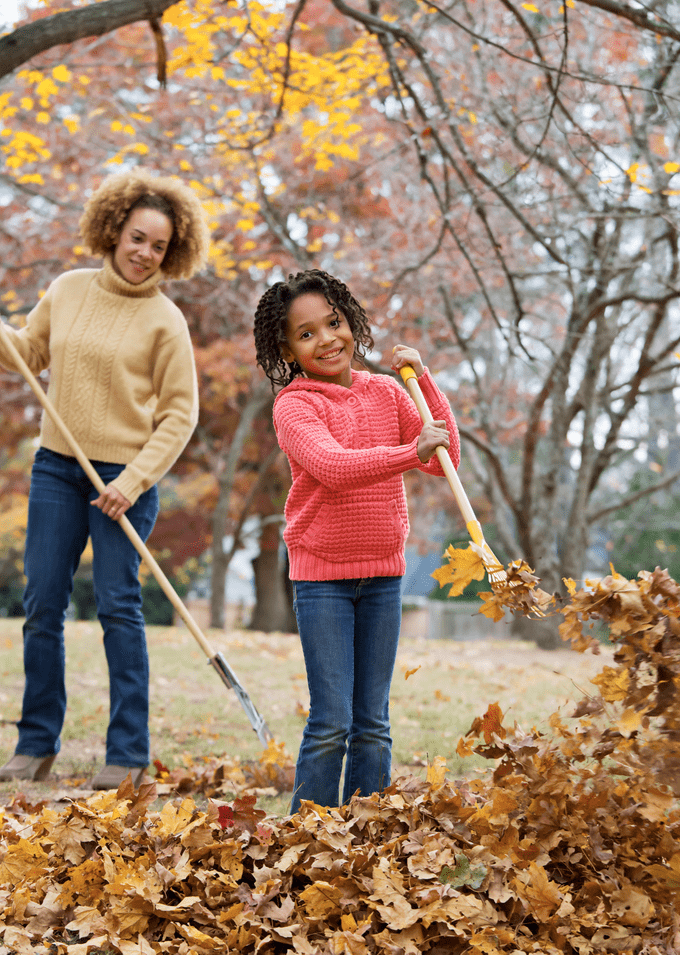
Mulch serves a few purposes in the garden. It can hold moisture in the ground (so you can water plants less often!) and even improve the soil quality.
Fallen leaves make excellent mulch for your lawn. So don’t bag them up and throw them away. Lisa Malmberg of Green Bay, Wisconsin, says, “After gardening organically for more than 30 years, I mulch all our beds with shredded leaves each autumn.”
To do this fall cleanup chore yourself, just run a pile of leaves over with a lawn mower. The leaf mulch will be ready when the leaves are in quarter-sized pieces.
Lisa points out other benefits, too. She says, “It’s great for the plants and soil, and birds love all the insects they find in the leaves.”
We asked a garden expert: Can you reuse potting soil?
4. Turn Over the Soil
It’s a hard job, but Pam Soetaert of Lampe, Missouri, says, “I turn soil over in the fall because I’m six months younger than I will be the following spring!”
Check out 25 more garden tips we learned from our grandmas.
5. Create Brush and Yard Debris Piles
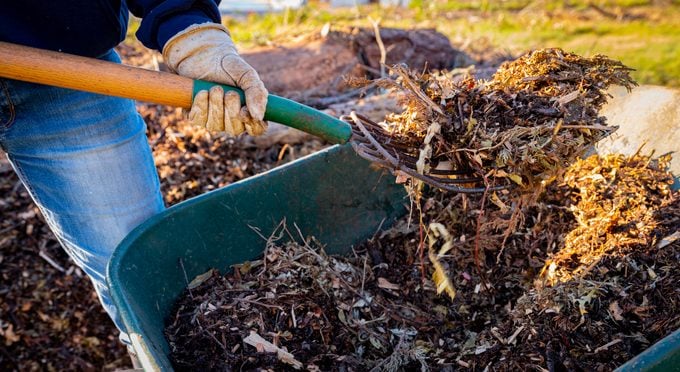
Piles of branches, sticks and other yard debris can be worth their weight in garden gold. These piles can be used as compost, broken down into mulch, or serve as a home to helpful backyard bugs.
Greg Mandigo of Alma Center, Wisconsin, says, “Along with disease- and insect-free garden debris, I make a pile of leaves in my yard. In spring, I use this mulch to cover potatoes and put around my plants.”
Learn how butterflies and bugs hibernate.
6. Store Garden Hoses
Drain your garden hoses and bring them in when you’re done, since water left in hoses over winter can lead to cracking and bursting.
Check out the best fall flowers (that aren’t mums).
7. Protect Your Roses
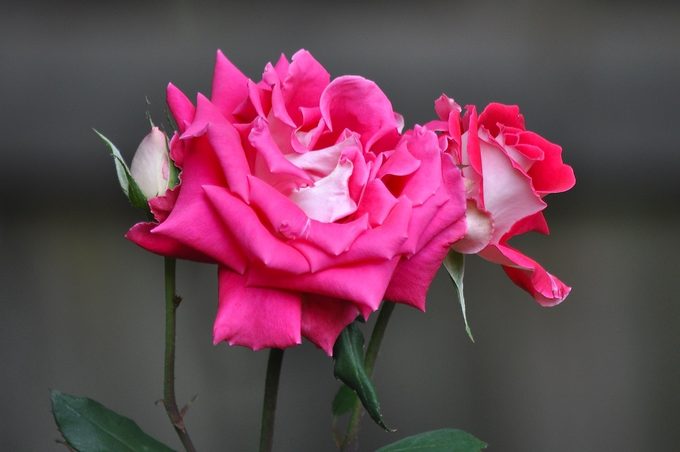
If you’re a rose gardener, this is one of those fall cleanup garden chores that goes without saying. But if you’re new to growing roses, or have a special rose bush you’d like to protect, this chore is worth a few minutes of your time. Trim tall canes and cover roses with straw or evergreen boughs to protect the plants from cold weather.
If you use rose cones, make sure they are vented. You can also cover roses with dry leaves and wrap them with hardware cloth or burlap. Before covering roses, clean up any diseased leaf debris and apply a new layer of mulch to your beds.
8. Mark Plant Locations
Now’s the time to use sturdy plant markers to note the location of any new perennials, bulbs, or seeds you might forget about come spring. There’s nothing more frustrating than accidentally weeding out seedlings in the spring along with pesky weeds, or planting something on top of something else without realizing it.
There’s no need for anything fancy. Try a permanent marker and paint stir stick, topped with a coat of clear gloss spray enamel. You don’t need it to look pretty. You just need it to last until spring.
Discover why fall is the perfect time to plant perennials.
